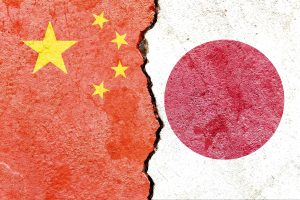Why did the murder of a Japanese child in China’s Shenzhen province in September 2024 have such a profound impact on Japanese society? It was not because the media reports were misleading or because the Japanese public overreacted. Japan has seen numerous anti-Japanese demonstrations in China, reflecting issues of historical perception and territorial disputes.
At the time of the anti-Japan demonstrations that occurred about two decades ago, however, the Japanese community in China remained relatively calm. This was because they did not perceive that their lives were in danger. Some of the demonstrations did include actions such as arson, but they were essentially directed at buildings and products linked to Japan. They did not threaten to take human life.
This is why many Japanese living in China didn’t feel the need to return to Japan, even though worried friends and family back in Japan urged them to come home. In fact, the Japanese actually in China felt that there was no problem. The ones worrying were in Japan, while the Japanese who actually lived in China were generally unconcerned.
That was two decades ago; today, things are different. It goes without saying that Japanese society was shocked by the murder, but the Japanese community in China was even more shaken. This year has seen an incident in Suzhou and then the more recent attack in Shenzhen. More generally, the number of incidents where Japanese people are at risk of getting hurt has risen. These incidents are targeting people rather than property, and they have been life-threatening. This represents a much more serious threat to Japanese expatriates in China. Japanese schools across China have tightened their security, and some Japanese are starting to send their families back to Japan. As such, the recent incident is wholly different from the anti-Japanese demonstrations of the past.
Two decades ago, after the anti-Japanese demonstrations caused a major deterioration in China-Japan relations, the two countries began taking steps to improve relations. Then-Prime Minister Koizumi Junichiro had partly triggered the anti-Japanese demonstrations by repeatedly visiting the Yasukuni Shrine, but toward the end of his administration, he dispatched Foreign Minister Machimura Nobutaka to China, paving the way for the China-Japan joint history research.
Meanwhile, the first Abe Shinzo administration, which was inaugurated in 2006, stated that it would build a mutually beneficial relationship based on common strategic interests with the Chinese, and Abe himself never visited the Yasukuni Shrine during his term. At the time, Japanese sentiment toward China had started to deteriorate considerably, but Japan and China were still able to hold summit meetings and ministerial exchanges.
And today? Responding to this incident, the foreign ministers met in the United States, the Japanese vice foreign minister visited China, and discussions are also ongoing through diplomatic channels. Yet the background of the incident and even the motive of the perpetrator are unknown. How can Japan and China manage this problem and prevent a deterioration and escalation of public sentiment?
Meanwhile, there is another phenomenon taking place today within civil society that was not apparent two decades ago: Comments on Chinese social media mourning the victims have been widely read within Japan, and Chinese people living in Japan have also consistently expressed sympathy for the victims. This kind of empathy, especially online, was not necessarily present in the two countries two decades ago.
However, social media discourse lacks credibility, as it can be easily steered by the Chinese authorities and is often based on unreliable information, whether intentional or not. What is happening online is unlikely to be enough to improve the situation. Sympathy for the victims needs to be expressed by both governments and civil society, with recognition based on facts, and government action designed to prevent any escalation.

































